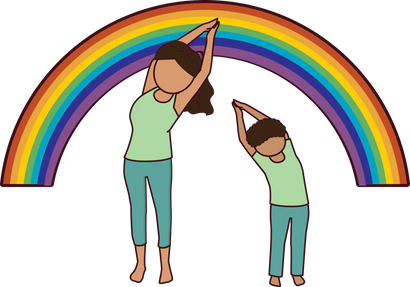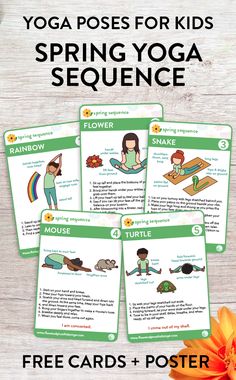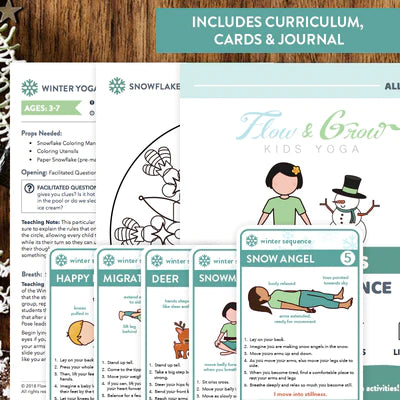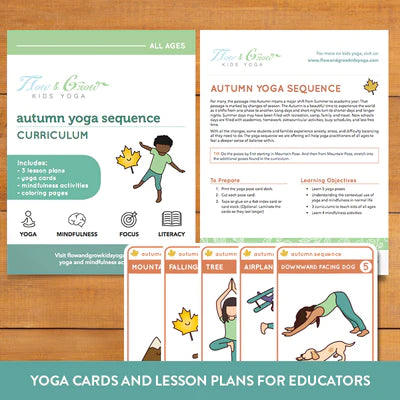Your Cart is Empty

User Research is a Key to Growing Your Kids Yoga Business
by Lara Hocheiser May 09, 2023 6 min read
User Research feedback loops can improve your classes, courses, and content and create a bridge to new business.
#kidsyogabusinesstips #businessmentorship #kidsyogapreneur #userresearch
With ten years of experience creating student programs, professional development, teacher training, and learning materials in the kid’s yoga and mindfulness industry, I’d like to share some wisdom.
Positive feedback, woohoo!
Anyone working in our industry knows we tend to get lots of positive feedback. We get text messages, website reviews, phone calls, thank you cards, and more. It is lovely to receive positive feedback because we do such high-impact work, so a text stating, “Your class changed my life.” feels wonderful, but one text does not provide all the feedback we need to improve our work and expand our impact.


User research is the key to collecting and analyzing the data we need to grow our businesses, deliver meaningful information in impactful ways, and continue to provide a better experience in an ongoing manner. We can conduct user research in a number of ways, including informal paper and pen surveys, digital surveys, focus groups, user interviews, and more. The key is to pick a methodology and a workflow that works for the scale of your business and ensure that you are able to methodically collect data from the right audiences, identify trends and draw objective insights.
Customer Feedback- Testimonials
One way I collected customer feedback was to ask for written testimonials on pen and paper at the end of a teacher training weekend. Participants could opt to write a review which gave me direct quotes to use on my website, but there were limitations. Because they were handwritten, I would have to type them after. You could easily send digital requests for testimonials and feedback via email or your website, too but remember. There is something magical to harnessing the energy of a person you just provided a service to.
For teacher training, I recommend asking for testimonials immediately after they complete the course and again 4-8 weeks later, once they have had time to apply the learning. That way, you can collect their immediate review and learn more about the impact of the training on the customer’s career and the children they serve in the subsequent one.
The videos my trainees recorded about their experience in my training were turned into ads which converted to sales because people window shopping on my website felt confident that other people’s feedback was reliable.
Sample Testimonial mashup video
If you sell products such as lesson plans, I highly recommend you collect testimonials either through automation on your website, via email, or through some other reliable process. If you provide student programming, make sure you send an assessment to the staff and/or students throughout your residency.
Social Proof Is How People Make Purchases
Why ask for testimonials and feedback? Social proof is an important aspect of doing business today. Social proof consists of customer reviews, star ratings, videos, and written testimonies from customers or users. These are increasingly essential for people to be able to work with you or make a purchase from you.
Feedback Helps You Make Improvements
Not only does user feedback promote sales, but it improves our offerings, too. Imagine teaching the same course repeatedly without asking how you might improve it. You would miss out on great feedback shaping how you do things. For example, someone might share that they felt they sat for too long, and then you can include more movement-oriented activities throughout your program. Or, perhaps someone felt you went too quickly over a section that they needed more support with, and you can aim to go slower or add more visual aids to that section.
 You can use critical feedback to improve your classes, products, and courses to make learning better and more accessible, improving user experience. One comment I heard a lot early on was, “I wish everything you taught were written down somewhere.” That led me to create a product line of lesson plans, games, and other learning materials for children and teachers.
You can use critical feedback to improve your classes, products, and courses to make learning better and more accessible, improving user experience. One comment I heard a lot early on was, “I wish everything you taught were written down somewhere.” That led me to create a product line of lesson plans, games, and other learning materials for children and teachers.Retention and Attrition - Keeping and Losing Our Clients
How often do you check in about client satisfaction? How do you respond?
For many years, my primary revenue stream was after-school and school-day programming. One year, I lost 4 school clients who had been with me for years. All of them had the same instructor... I see now that checking in at regular touch points and being responsive is critical.
I made a practice of speaking to the program directors regularly. They would either share praise or concern. When a concern is shared, you must listen and adjust. If you have an instructor that is not making a positive impact, consider replacing them and offer to retrain the offending staff member if they show they are coachable. Poor attendance or attitude can cost you! I wish I had been less empathetic to the instructor and more so to the client because the cost of a recurring client is a burden we should not have to bear. After all, you know what work goes into gaining new clients.
Speaking To the People that You Aim To Serve
Feedback is great, as we have established above, but user research should be forward-looking, and for that, you need to recruit research participants outside your customer base. How can we learn more about the client or prospective client needs?
Whether you make lesson plans, teach in schools, or offer training, speaking to the end user is a massive benefit before creating and marketing your idea. Validating ideas can take place with people that match your customer profile; for example, if you sell to teachers that work in elementary schools, you should make sure people in that group like your idea, understand it and provide their insights and thoughts before developing it.
Because I attracted people that were enthusiastic about yoga and mindfulness education, the teachers I spoke to when validating my ideas were not representative of the general population. I wish I had done focus groups or user interviews with school personnel before creating many of the professional development classes and accompanying content. I often expected teachers to be more enthusiastic and interested, and it turns out that, at mandatory events, they are NOT. I could have made the presentations more entry-level and data-focused rather than extensive and substantive. The teachers needed a few tools rather than the whole kitchen sink of activities. They wanted to know that there were studies and proof because they were skeptical.
The people that want the whole kitchen sink are the ones coming to comprehensive training, and therefore the content should be a reflection of that.
By doing the relevant user research, I could have saved development dollars and reduced the stress threshold for educators. When teachers arrive at a summer professional development mindfulness class and open a 60-page packet, their eyes roll, and they disengage. What might user feedback do for your time and resources? How might it shape the future of your classes, courses, and products?
In hindsight, I could have gotten 5 school principals and 5 teachers together to ask about which content model they preferred, what they most need from a mindfulness presentation, and what their insights, ideas, and concerts were. Working with some strangers in this context is important because people who know and like you may be more likely to tell you what they think you want to hear. In my case, I could have saved time, energy, and effort in understanding the range of teacher perspectives prior to developing content and courses for them.
According to the Nielsen Norman Group, a pool of five users can reveal 85% of the problems when using a product. I also might have used a small focus group to improve the content I did create, and I may do so in the short term. How might user input shape what you do or make?
Creating Content with Wider Appeal
When I reflect on the content I created, I often assumed that what I was seeing in student behavior going to be relevant to other teachers. I assumed that the magic from my classes would translate to other classes. In some cases, this was true, and the content sold widely and resonated deeply based on customer feedback. But there are products I invested in that have hardly sold any copies. Might those be a waste of resources?
User Research Participant Recruitment
Over the past year, I have worked part-time for a user research participant recruitment platform called Respondent. They recruit research participants that match the requirements we need for research studies, such as user interviews, focus groups, and diary studies. Because yoga business owners often know many teachers and have vast social networks, recruiting from people we know can be tempting. I recommend either using a platform like Respondent or expanding your net beyond first-person contacts so you are more likely to receive honest feedback.
“Businesses that invest close to 10% of their total budget on UX are likely to see tremendous ROI. User research improves user experience and it must be done right.” - Amazon AWS
It is an investment to do user research, but there is evidence that spending 10% of our total budget on user experience research can yield a 1000% return.
If you are worried about investing in user research, you can also earn as a research study participant. You can also use Respondent to find Paid online research studies to supplement your income.
Please let me know what lessons you will apply from this article in the comments. Feel free to ask questions, too.
-Lara
Leave a comment
Comments will be approved before showing up.
Also in Kids Yoga Blog

Easter Yoga Poses for Kids: Joy and Wellness to the Holiday Season
by Lara Hocheiser April 04, 2024 4 min read

Multifaceted Health Benefits of Yoga for Kids
by Lara Hocheiser February 04, 2024 3 min read
Yoga for kids has a transformative power! Holistic practices can enhance mental health, concentration, and physical fitness.

Learn to Teach Kids Yoga Training - Fall 2024
by Lara Hocheiser January 25, 2024 1 min read
In Fall 2024, you will learn how to teach kids yoga. Help empower young minds by learning evidence-based techniques.
Yamas and Niyamas: Successful Relationships with Self & Others (tweens and teens)
digital-resourceskids-yoga-resourceslesson-plansmiddle-high-school-yoga-mindfulnessmindfulnesspricey-content
Yamas and Niyamas: Successful Relationships with Self & Others (tweens and teens)
2 reviews
5.0 / 5.0
(2) 2 total reviews
$55.00
Yamas and Niyamas: Successful Relationships with Self & Others (tweens and teens)
2 reviews
5.0 / 5.0
(2) 2 total reviews
$55.00
Ultimate Kids Year of Yoga Bundle
bundlesdigital-resourcesearly-childhood-yoga-mindfulnesselementary-yoga-mindfulnesskids-yoga-resourcesmiddle-high-school-yoga-mindfulnesspricey-contentseasonal-yogayoga-cards
Ultimate Kids Year of Yoga Bundle
5 reviews
5.0 / 5.0
(5) 5 total reviews
$45.00
Ultimate Kids Year of Yoga Bundle
5 reviews
5.0 / 5.0
(5) 5 total reviews
$45.00
Kid’s Sun Salutation Yoga Cards
digital-resourcesearly-childhood-yoga-mindfulnesselementary-yoga-mindfulnesskids-yoga-resourcesliteracyunder-15yoga-cards
Kid’s Sun Salutation Yoga Cards
3 reviews
4.33 / 5.0
(3) 3 total reviews
$12.95
Kid’s Sun Salutation Yoga Cards
3 reviews
4.33 / 5.0
(3) 3 total reviews
$12.95














